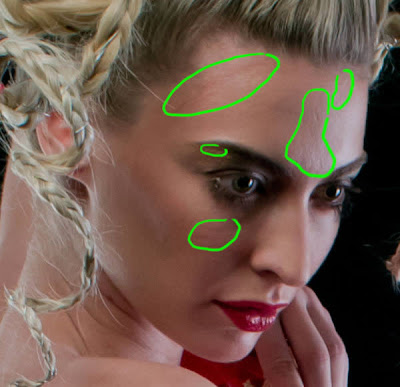
In this tutorial we’ll teach you how to create a Media Player Interface in Photoshop.
Step 1

Create a new file 398×398 pixels. Using the Layer Style on the background select Gradient overlay and make the colors #016497 and #6bd3f5.

Create a new file, with the Paint Bucket tool fill the layer black. Go to Filter > Noise > Add Noise (make it 20%). Make the layer opacity 14%.

Select the Round Rectangle Tool and create the main shape for the Media Interface. Double click on the layer to bring up Layer Style, go into Gradient Overlay and make it these colors: #000000 and #2e2e2e. Select Stroke and make the size 1px and color #000000.

Hold down the ctrl key and Layer Thumbnail containing the box, this will highlight the box. Create a new layer and fill the box shape it white, press the right key once to move over the highlighted shape and press delete. You should have a thin line on the side of the box. Get the eraser tool with the soft edge and make the opacity 60%. Lightly erase the top and bottom edge of the line to make a shiny edge effect.

Do the same step to the right side of the box.

Select the Rectangle Tool and create a box in the middle of the previous box like above. Open up the Layer Style to the layer, select Gradient overlay and make the colors #000000 and #2e2e2e.

Like the previous step do the white lines to this new square layer.
Step 2

Select the rounded rectangle tool and draw a rectangle. Holding down the ctrl-key, press down on the bottom right corner and move to the right. Do the same move with the bottom left side of the other side. Make sure the bottom is even.
Holding down the ctrl-key and layer box selecting the rectangle shape. Go to Select > Modify and Expand by 2 pixels.

On the new layer open up the Layer Style > Select Gradient and make the colors from bottom to top #454545 #626262 #646464 & #222222. Select the Stroke tool make the size 1px, color #oooooo and opacity 71%.

Holding down the ctrl-key select the rectangle box layer to select the shape. Create a new file to go underneath the rectange shape and fill it #FFFFFF. Press ctrl and press the up arrow once to make it viewable on top of the rectangle shape. With the eraser tool on a 60% opacity, slightly erase the edges.

With the Zoom Tool enlarge the panel area. Select the line tool, make it 1px. With the colors black and white draw 2 lines side by side. Rasterize both layers and merge them into each other (press ctrl E on the top layer).

Using the eraser tool slightly erase the top and bottom of the line.

Zoom out and duplicate layer to make 4 lines.

Using triangle shapes and square shapes create little icons for the media player. For each shape make the gradient #385870 #bbdbf3 and 45657d.

Select the rounded rectangle tool and make a shape like the one in this picture. Go into Layer Styles > Gradients Overlay and make the colors #4daaf2 and a3d7ff. Select stroke, make it 1px and the color #000000.

Holding down the ctrl key click on the rectangle layer to select the shape.

Click on the Elliptical Marquee Tool and while press ALT key select the area of the rectangle you wish to go away to make it look like the shape in this image.

Make a new layer and fill in the shape white, then make the opacity for that layer 11%.

If you wish to put a scene from a movie in the player, get a image you. Place it in the centre of the screen, hold down on the ctrl key and select the rectangle screen shape.Selecting the image layer press ctrl+x, then delete the image layer. Press ctrl + P which should paste the new image on a layer. Place the image underneath the reflected shape and make the opacity 78%.

Zoom in to the image, select the color #0a4579 and with the pencil tool draw a speaker shape.

Select the brush tool and with the same color draw 2 circles, then copy and paste the circles to make more. Make sure everything is even.

Put all the media interface files (excluding the background) in one folder. Duplicated the folder, right click on the new folder and select Convert to Smart Object. Right click on the file again and press Rasterize Layer.

With the duplicate layer selected press ctrl+T (make sure when you do this the Marquee Tool is selected), pull down the image to make it look like the screenshot above.

Make the layer opacity 49% and select the eraser tool. With a soft edged eraser at 70% erase the bottom of the image.

Lastly with the layer still selected go to Filter > Blur > Blur to make the image slightly blurry. Do this a number of times to get your desired effect.

Here’s the final Result





